Everything you need to know about Ukraine’s invasion of Russia
- By Alex Hollings
Share This Article
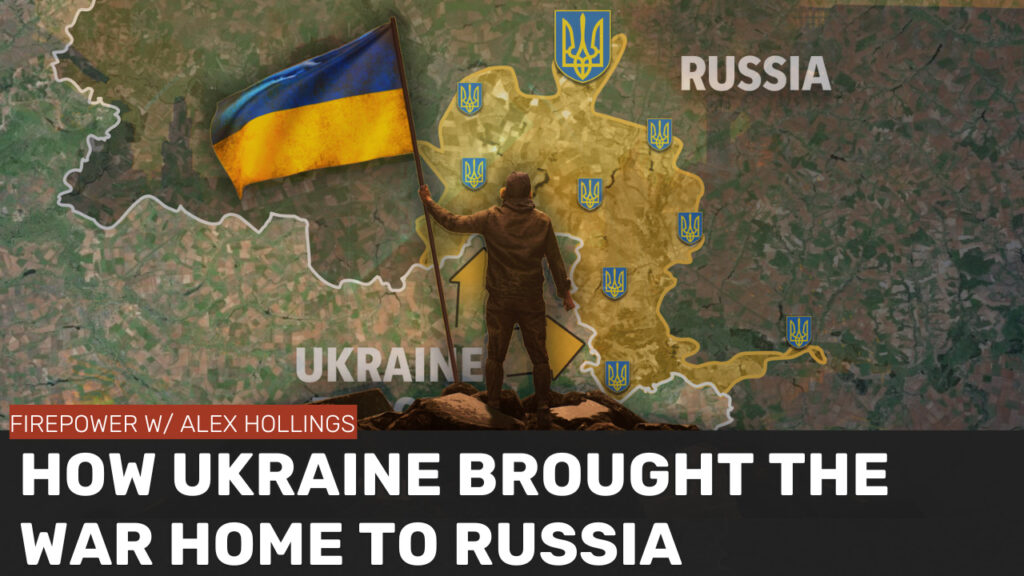
After more than two years on the defensive, Ukrainian forces have flipped the script, pouring over the Russian border and seizing control of more than 1,000 square kilometers of territory in a week. And unlike Ukraine’s previous and usually short-lived raids across the border, this time, Ukrainian forces are settling in for a fight, fortifying defensive positions throughout the occupied Kursk region in what Ukrainian officials are calling a “buffer zone” to protect against continued airstrikes launched into Ukraine from the area.
This surprise offensive went on for days before Ukrainian officials shed any light on its objectives. We now know that the theory posited by many analysts throughout the week – that this incursion is meant to force a realignment of Russian forces after months of steady but grinding advances deeper into Ukrainian territory – is true.
Behind the rifles of thousands of battle-hardened troops, Ukraine has taken hundreds of Russian soldiers prisoner and captured dozens of towns and villages, but the biggest blow of this ongoing offensive may be to the reputation and standing of Russian President Vladimir Putin.
How Ukraine’s invasion of Russia began
In the early morning of August 6, Ukrainian forces numbering as many as 10,000 according to some reports, launched a surprise offensive in western Russia that had been planned and staged behind a veil of complete secrecy. The attack was such a surprise that it not only took Russia’s border troops completely off guard, but Ukraine’s Western allies as well – at least if statements made by various government officials are to be believed.
Ukrainian troops and armored vehicles moved quickly, crossing the border on multiple vectors and rapidly capturing town after town. As news of the offensive reached the media, it was accompanied by social media posts uploaded by Ukrainian troops, showing them pulling Russian flags down.
Ukrainian infantry take down the Russian flag from the Sverdlikovo town council building, Kursk Oblast. pic.twitter.com/LOrHhImnLJ
— OSINTtechnical (@Osinttechnical) August 10, 2024
In one video, vetted by the New York Times, a Ukrainian soldier can be seen standing on the shoulders of another, breaking a Russian flag off of its wooden post and tossing it aside. That video was confirmed to be taken in Sverdlikovo, just a few miles inside Russia. Another video, filmed about five miles further west in the town of Daryino, shows a similar scene, with one Ukrainian soldier tossing a Russian flag in the mud as another one flexes his muscles.
“The first days of the Ukrainian operation in the Kursk region should be assessed as very successful, although its ultimate goals remain unclear,” Ruslan Pukhov, the director of the security research group CAST out of Moscow, told the New York Times. “In moral terms, the Russian Federation has taken a powerful blow.”
This effort was arguably only successful thanks to the immense degree of secrecy surrounding it, but in hindsight, it’s beginning to get easier to see how it came together. A drone battalion from Ukraine’s 22nd Mechanized Brigade was spotted near the Russian border in July after more than a year of fighting on the front lines some 80 miles to the West. Troops from the 82nd Air Assault Brigade, last known to be fighting elsewhere in the Kharkiv region, were spotted near the border soon thereafter. Before long, troops from the 80th Air Assault Brigade seemed to join them.
This amassing of forces, despite its secrecy, didn’t go unnoticed by Russian intelligence. According to Andrei Gurulyov, a prominent member of Russia’s parliament and a former senior ranking officer in the Russian Army, a report on the buildup was submitted to Russian leadership nearly a month before the assault.
“But from the top came the order not to panic, and that those above know better,” Gurulyov acknowledged on Russian State Television.
Progress comes with a cost
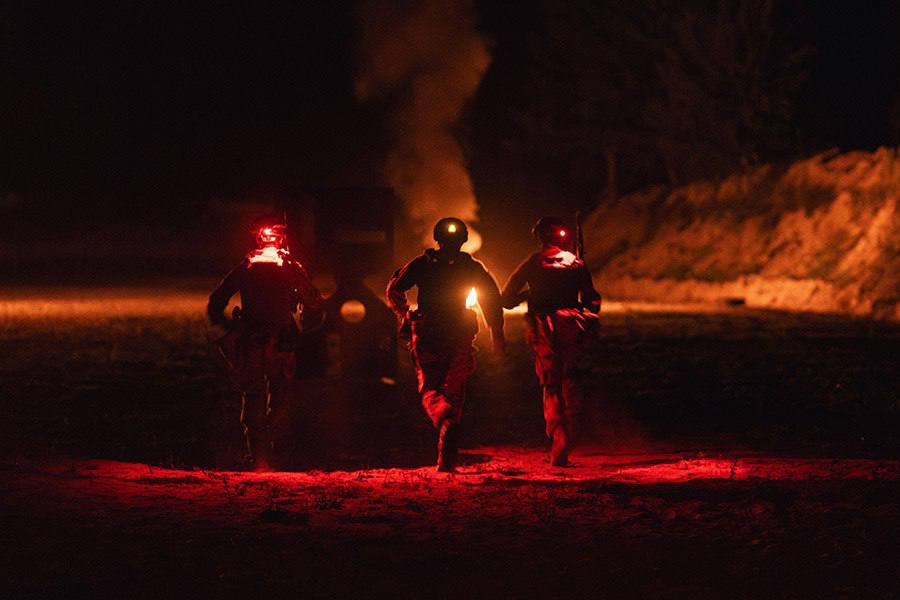
While the attack has since become something of a morale lightning rod for the embattled Ukrainian population, for many of the troops taking their fight for survival to Russian soil, the combat was just like any other day in this conflict.
“Grenades and mortars look the same wherever you are,” explained a 43-year-old Ukrainian soldier named Ivan, who’s fighting in Russia.
Ivan’s experiences over the past few weeks serve as a grim reminder that even this successful operation has come at a significant cost. He and his unit were advancing into Russian territory at an average of an astonishing 10 kilometers (6.2 miles) a day, fighting their way across open fields and railway lines, and rotating in fresh troops under cover of darkness as each night fell. But after three days of fighting off their back foot, Russian forces finally started to get their bearings and unleashed an onslaught of air-dropped glide bombs onto the Ukrainian forces on the third night, despite the obvious collateral damage done to Russian territory.
These glide bombs have proven highly effective for Russian forces in recent months. They’re similar in function to America’s own JDAM-ERs, made up of satellite guidance kits and expandable glide-wings mounted on inexpensive gravity bombs. They’re exceedingly difficult to intercept, offer a high degree of precision, and can be dropped from 40 miles out.
Related: Russia has started using a new destructive bomb in Ukraine
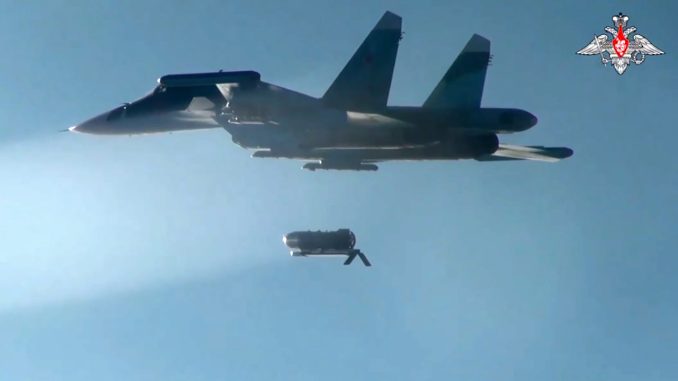
Ivan’s unit instantly lost a dozen men when the first wave of bombs hit, with several others injured.
“Everything was burning. Arms here, legs there,” Ivan recounted.
Ivan himself took shrapnel to the groin and chest, forcing him to be evacuated back to Ukraine for medical treatment and allowing him to share a few scant details about the ongoing operation with journalists from The Economist. But after nearly 30 months of fighting for its survival, Ukraine is no stranger to loss. Even as Russian glide bombs rained down, the offensive progressed – and the following day, on August 10 – some Ukrainian units had pressed a full 40 kilometers (about 25 miles) into Russia, rapidly approaching the city of Kursk, which serves as the capital of the Kursk Oblast.
More Ukrainian soldiers have shined some light on how Ukraine has managed to capture more territory in a week than Russia has in months: A 28-year-old paratrooper from Ukraine’s 33rd Brigade named Angol made it 30 kilometers (a bit more than 18 miles) into Russia before being injured – he isn’t sure if he was hit by artillery, a glide bomb, or even friendly fire, such is the haze of battle on the front lines.
According to Angol, even amid the heavy fighting, Russian troops were on the run, enabled by covering airstrikes and artillery fire as they fled their defensive positions, abandoning equipment, weapons, and ammunition as they ran.
It seems the Russian troops defending the border believed the red line drawn by Putin, which has seen Western governments disallow the use of their weapon systems to attack Russian territory, would be enough to insulate them from the fighting. As thousands of battle-hardened Ukrainian troops tore through the region, they seemed to continue taking Russians by surprise even days into the offensive.
“We sent our most combat-ready units to the weakest point on their border,” an unnamed member of Ukraine’s general staff deployed to the region told the press. “Conscript soldiers faced paratroopers and simply surrendered.”
And surrender they did. By August 13, seven days into Ukraine’s surprise invasion, Ukrainian President Volodymyr Zelenskyy announced that 74 Russian settlements were now under Ukrainian occupation and that “hundreds” of Russian troops had surrendered. By the following day, the number of Russian towns and villages inside of Ukrainian control had expanded once again, to 82.
In one engagement, Ukrainian forces captured 102 soldiers out of Russia’s 488th Guards Motorized Rifle Regiment at once.
“They captured and cleared a sprawling, concrete and well-fortified company stronghold from all sides – with underground communications and personnel accommodation, a canteen, an armoury and even a bathhouse,” an unnamed source told Reuters.
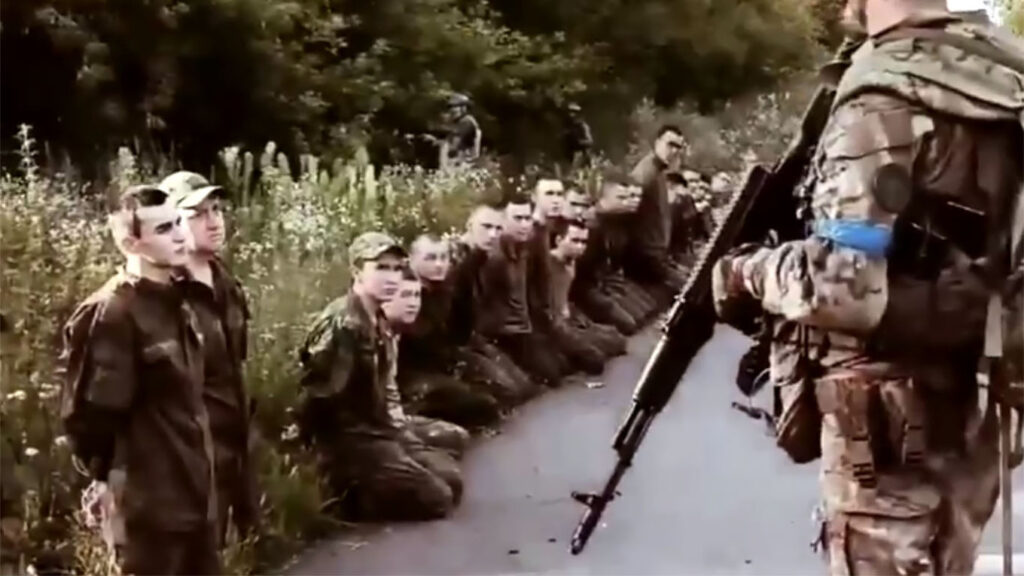
According to Russia’s state media, more than 132,000 Russian civilians have now fled their homes in the Kursk region to avoid the fighting.
“Russia brought war to others, and now it is coming home,” Zelensky said in his speech.
It’s worth noting that despite the hesitation of Western leaders to allow Ukraine to take the fight onto Russian soil, it’s evident that this offensive has involved the widespread use of American-supplied vehicles, arms, and munitions – in what some argue could be seen as a violation of yet another of Putin’s “red lines.” However, U.S. officials don’t see it that way. With countless long-range strikes launched into Ukrainian territory from the Kursk region, both Ukrainian and American officials have deftly taken to calling the offensive a “self-defense” action.
“They are taking actions to protect themselves from attacks,” Sabrina Singh, the Pentagon’s deputy press secretary, said on Thursday.
And while Ukraine’s progress into Russia has slowed in recent days, those protective actions have not. On the night of August 14, Ukraine launched its largest long-range drone attack into Russian territory to date, engaging weapons storage facilities and warehouses across four different Russian Air Force installations. Some sources suggest these attacks were aimed at reducing Russia’s available inventory of glide bombs.
Russia claimed to have shot down 117 drones and at least four missiles during the attack; the true outcome of these airstrikes remains somewhat murky.
Related: Everything you need to know about F-16s arriving in Ukraine
Why did Ukraine invade Russia?
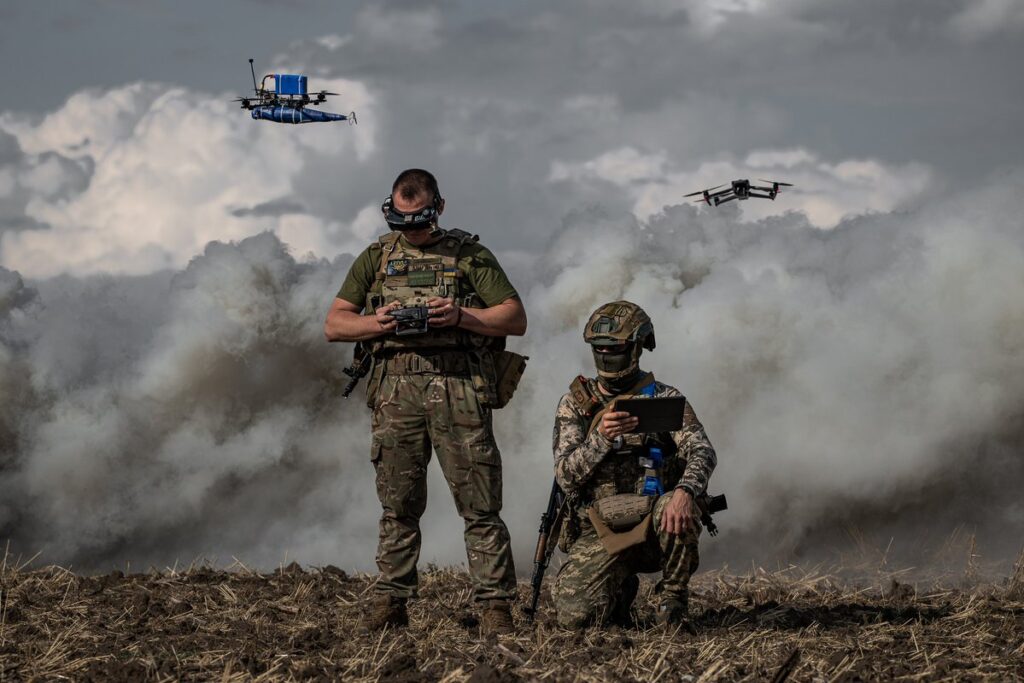
It now seems evident that the offensive has multiple overlapping objectives. As the Atlantic Council contends, the attack’s most obvious goal is to force Russia to realign after months of grueling but steady progress.
“By attacking across the lightly defended border and seizing Russian territory, Ukrainian commanders believe they can force the Kremlin to withdraw troops from the front lines of the war in Ukraine in order to redeploy them for the defense of Russia itself,” the Atlantic Council’s Peter Dickinson postulates.
This has seemingly been confirmed by former Ukrainian defense minister Andriy Zagorodnyuk, and to some extent, it seems to be working.
“Russia has relocated some of its units from both Zaporizhzhia and Kherson regions of Ukraine’s south,” Dmytro Lykhoviy, a Ukrainian army spokesman, told Politico on Tuesday.
The U.S.-based think-tank Institute for the Study of War (ISW) has been tracking and reporting on claims posted by pro-Russian military bloggers, who may regularly trade in Kremlin-sourced disinformation, but also often provide more detail into ongoing operations than official Russian channels. According to the ISW’s analysis, at least some Russian irregular warfare units have been pulled from the Donetsk front in eastern Ukraine to be redeployed in a defensive posture inside Russia.
“Russian military command has determined that possible disruptions to the offensive operations in northern Kharkiv Oblast and other less-critical frontline areas are an acceptable risk to adequately respond to the Ukrainian incursion in Kursk Oblast,” the ISW assessed.
But despite these changes, thus far, there’s been little shift in Russia’s overall defensive posture, even as Ukraine appointed Major General Eduard Moskalyov as the new military commandant of captured Russian territory.
“Their commanders aren’t idiots,” said The Econimist’s unnamed Ukrainian general-staff source. “They are moving forces, but not as quickly as we would like. They know we can’t extend logistics 80 or 100 km.”
What are the other implications of this offensive?
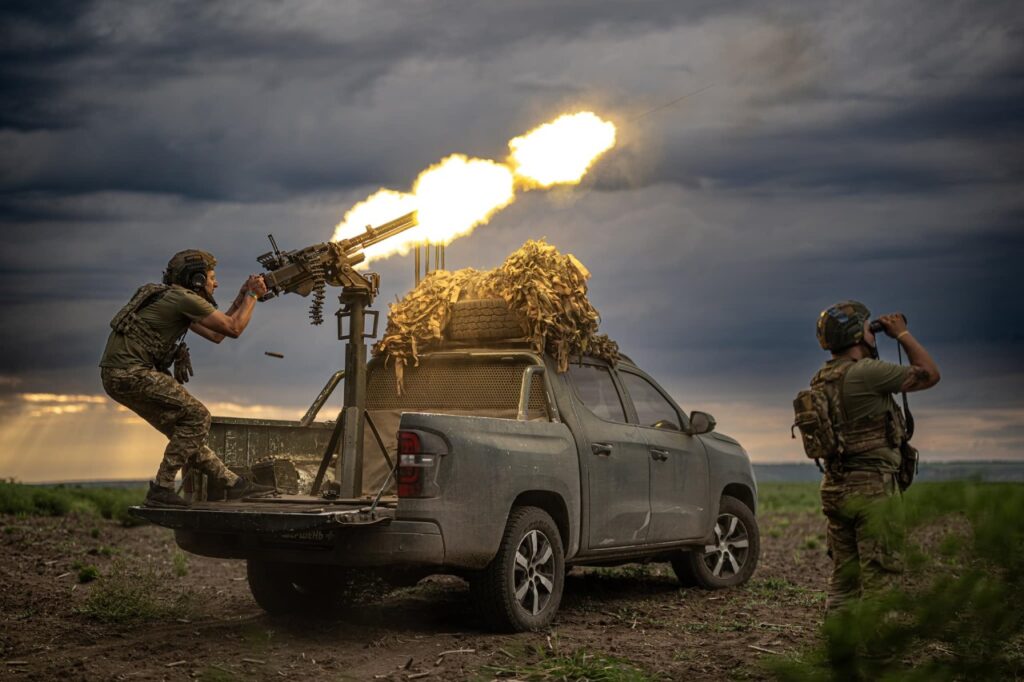
Ultimately, whether this offensive can force a redistribution of Russian forces across the conflict’s front lines depends on several factors, some of which are easier to quantify than others.
The psychological impact of Ukraine’s rapid advance into Russia, on both the Ukrainian and Russian populations, can’t be overstated. For Ukraine, the rapid progress serves as a desperately needed morale boost after years of Russia gobbling up Ukrainian territory. On the other side of the border, however, this attack has brought the war home for the Russian people, and perhaps even more importantly, shined a spotlight on Putin’s inability to defend Russian soil and sovereignty amid a conflict his government still refuses to call a war.
Even now, Moscow is referring to the new defensive effort inside Russia as a “counter-terrorism operation,” and Putin himself described the attack as nothing more than a “large-scale provocation” – both seemingly intentional ways of framing the offensive as less severe than a foreign military capturing Russian land.
To some extent, the value of this operation may ultimately be dictated by how Russia chooses to respond. If Ukraine succeeds in fortifying captured positions and digging in, Russian forces will have no choice but to respond, reducing the depth of seasoned warfighters on other frontlines throughout Ukraine. If Russia doesn’t mass enough forces to push Ukraine back, however, the seized territory could quickly become a bargaining chip in future peace negotiations.
From a geopolitical perspective, Ukraine’s attack – and Russia’s apparent inability to respond – has further reduced Russia’s military standing among global and even regional powers. Once seen as the world’s second strongest military force, Russia’s invasion of Ukraine has demonstrated conclusively that its Cold War-era warfare doctrine struggles to function on the modern battlefield; that its centralized command structure adapts on the battlefield very slowly; and Russia’s emphasis on fielding small batches of high-profile platforms aimed at securing global prestige or lucrative foreign sales, has come at the cost of significant atrophy across the breadth of its conventional forces.
While cynical to say as Ukraine continues to fight for its very survival, this entire conflict has already proven to be a massive strategic loss for Russia and certainly for Putin’s legacy. Once seen as a strategic mastermind and the only man who could return Russia to a romanticized vision of its former Soviet glory, there seems to be little hope of Putin emerging from this war as anything more than the man who sacrificed a sizeable portion of Russia’s military power and hundreds of thousands of lives, to capture about 20 percent of a nation the size of Texas that lies on Russia’s border.
What does the invasion of Russia mean for the future of the Ukraine war?
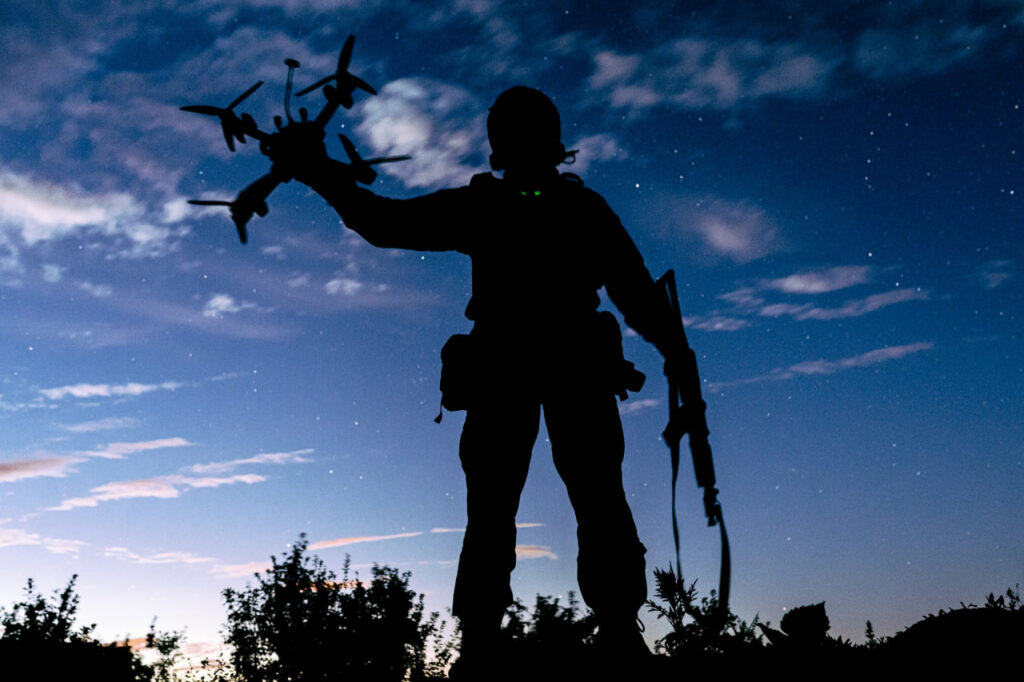
Ukraine’s rapid success in taking Russian territory doesn’t change Russia’s massive numerical advantage in troops and military hardware; undo its territorial gains; or mean Western governments are giving Ukraine free reign on how to use its Western weapon systems. Nevertheless, it does mark a significant shift in the war’s momentum. And now, with Western-sourced F-16s starting to take to the sky – something many consider to be a momentum-shifting victory in itself – the timing couldn’t be better for Ukraine to once again shock the world, and the Russian military, with what it’s capable of.
Since the conflict’s onset, Russia has been watching the clock wind down on Western support for Ukraine, knowing full well that it was only a matter of time before partisan bickering and concerns about dollars spent would sour public perceptions of the effort. All it needed to do was outlast the Western public’s attention span and financial tolerance, and once the flow of weapons and munitions dried up, Ukraine was as good as conquered.
But now, with more than 132,000 Russians displaced from their homes, and drone and missile strikes raining down deeper into Russia and in greater numbers than ever before, that waiting game may have just been turned on its head. Now, the question becomes: which population will fold first, those providing support, or those being forced to flee their homes?
While the idea of Russian civilians on the run isn’t something anyone should celebrate, it reminds me of an old story I used to tell my Marines when we’d find ourselves in a bad situation of our own creation:
A group of construction workers would meet in the parking lot of their job site every afternoon to break for lunch, and every day, one of the guys would open his lunch box and sigh with disgust.
“Egg salad sandwich again,” he’d lament, shaking his head and slamming the lunch box shut.
Finally, one of his coworkers asked him, “If you hate egg salad sandwiches so much, why not ask your old lady to make you something different?”
And he replied, “What are you talking about? I’m not married… I make my own sandwiches.”
Read more from Sandboxx News
- 8 places the CIA and military took me that you should visit
- Using roleplayers to train for hostage-rescue operations with Delta Force
- US Army successfully tests Dark Eagle hypersonic missile
- These are the 7 roles required for the perfect team
- 4 US law enforcement agencies helping secure the Paris Olympics
Related Posts
Sandboxx News Merch
-

‘AirPower’ Classic Hoodie
$46.00 – $48.00 Select options This product has multiple variants. The options may be chosen on the product page -

‘Sandboxx News’ Trucker Cap
$27.00 Select options This product has multiple variants. The options may be chosen on the product page -

‘Kinetic Diplomacy’ Bumper Sticker (White)
$8.00 Add to cart

Alex Hollings
Alex Hollings is a writer, dad, and Marine veteran.
Related to: Ukraine
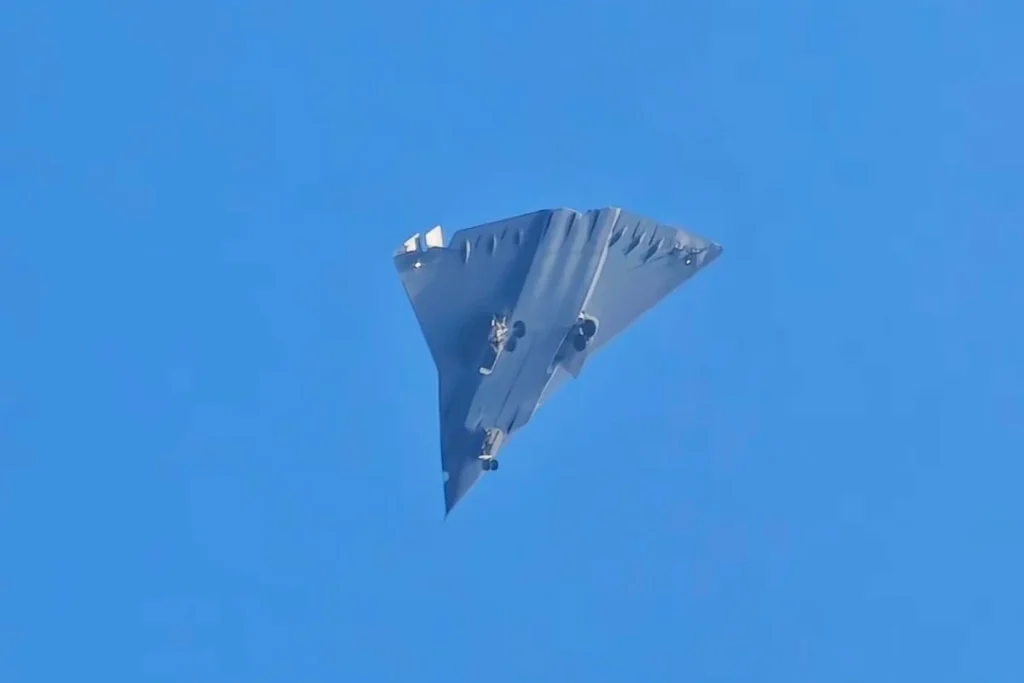
What do we know about China’s new ‘6th gen’ fighters?
Sandboxx News
-

‘Sandboxx News’ Trucker Cap
$27.00 Select options This product has multiple variants. The options may be chosen on the product page -

‘AirPower’ Classic Hoodie
$46.00 – $48.00 Select options This product has multiple variants. The options may be chosen on the product page -

‘AirPower’ Golf Rope Hat
$31.00 Select options This product has multiple variants. The options may be chosen on the product page -

‘Sandboxx News’ Dad Hat
$27.00 Select options This product has multiple variants. The options may be chosen on the product page
